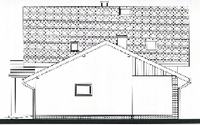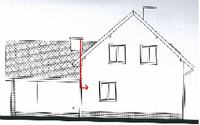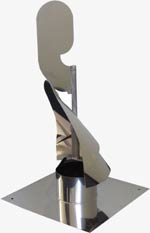Hello, I'm asking for advice...
I have such an unlucky location and construction of my house that when the wind blows, it pushes smoke from the chimney into the ventilation holes on the chimney...

The unfortunate thing about the structure is that the fireplace chimney is above the garage, which is attached to the "house proper - the residential part"
The chimney is very close to the junction of one roof into another... I have a theory that when the wind blows, it compresses the surfaces of the roof and spreads in all directions - falling into, among others, the ventilation grates that are on the sides of the chimney.
There are no "vents" installed at the top of the chimney yet? - smoke comes out directly from the hole at the top of the chimney.
What can be done to avoid such situations?
I will add that after observing the smoke coming out of the chimney, it looks like one big smoke ball - it expands in all directions.
In the second picture, I marked in red the channel through which smoke flows into the grate in the kitchen - where, fortunately, I have a hood. If I forget to turn it on, smoke starts coming in there when there is a stronger wind.

I have such an unlucky location and construction of my house that when the wind blows, it pushes smoke from the chimney into the ventilation holes on the chimney...

The unfortunate thing about the structure is that the fireplace chimney is above the garage, which is attached to the "house proper - the residential part"
The chimney is very close to the junction of one roof into another... I have a theory that when the wind blows, it compresses the surfaces of the roof and spreads in all directions - falling into, among others, the ventilation grates that are on the sides of the chimney.
There are no "vents" installed at the top of the chimney yet? - smoke comes out directly from the hole at the top of the chimney.
What can be done to avoid such situations?
I will add that after observing the smoke coming out of the chimney, it looks like one big smoke ball - it expands in all directions.
In the second picture, I marked in red the channel through which smoke flows into the grate in the kitchen - where, fortunately, I have a hood. If I forget to turn it on, smoke starts coming in there when there is a stronger wind.





